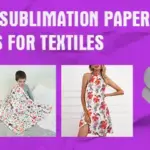
Is UV DTF Printing Suitable for All Materials?
2024-08-21
Best Sublimation Paper Rolls for Textiles
2024-08-27UV DTF (Direct to Film) printing is revolutionizing the way we approach custom printing projects. Whether you’re a business owner, a professional designer, or a hobbyist, the versatility and quality offered by UV DTF technology are unmatched. However, to fully unlock the potential of this cutting-edge printing method, selecting the right substrate is crucial. In this comprehensive guide, we will explore the best substrates for UV DTF printing, delving into their unique properties and how they impact the final product.
Understanding Substrates in UV DTF Printing
The term “substrate” refers to the surface onto which the UV DTF film is applied. The choice of substrate significantly influences the appearance, durability, and overall quality of the printed design. Different substrates react differently to UV inks and transfer films, which is why it’s essential to choose the right one for your specific project.
Top Substrates for UV DTF Printing
UV DTF Printing is suitable for some hard surface materials:
1. Glass
Glass is another fantastic substrate for UV DTF printing. Whether you’re customizing glassware, windows, or decorative pieces, UV DTF prints on glass are strikingly clear and resistant to fading. The smooth, non-porous surface of glass allows for sharp, detailed prints with excellent color reproduction.
2. Wood
For a rustic or natural aesthetic, wood is an ideal substrate for UV DTF printing. From custom signs to unique home décor items, wood substrates add warmth and character to any project. UV DTF prints on wood maintain their clarity and vibrancy, and the natural grain of the wood can add an extra layer of texture to the design.
3. Metal
Metal substrates, such as aluminum or stainless steel, are perfect for projects that require durability and a sleek, modern look. UV DTF prints on metal are robust and resistant to scratching, making them suitable for outdoor signs, promotional products, and industrial applications.
4. Ceramics
Ceramics are commonly used for custom mugs, tiles, and other decorative items. UV DTF prints on ceramics are durable and can withstand frequent washing without fading. The smooth, glossy surface of ceramics allows for vibrant, high-quality prints that stand out.
5. Plastics
Plastics, including acrylic, polycarbonate, and PVC, are versatile substrates for UV DTF printing. They are widely used in promotional products, signage, and packaging. UV DTF prints on plastics are durable and resistant to wear and tear, making them suitable for items that require frequent handling.
How to use uv dtf film on plastic keychain?
Choosing the Right Substrate for Your Project
When selecting a substrate for your UV DTF printing project, consider the following factors:
1. Durability
The durability of the substrate is crucial, especially for items that will be exposed to the elements or handled frequently. For outdoor applications, metal or plastic substrates are ideal due to their resistance to weathering and abrasion.
2. Surface Texture
The texture of the substrate affects the adhesion of the UV DTF film. Smooth surfaces like glass, metal, and ceramics provide excellent adhesion and detail in prints. Textured surfaces, such as wood, may require additional preparation to ensure a strong bond between the film and the substrate.
3. Aesthetic Appeal
The aesthetic qualities of the substrate can enhance the overall design. Wood for instance, add a natural and organic feel to the print, while metal and glass offer a modern, sleek appearance.
4. Cost-Effectiveness
Finally, cost is an important consideration, especially for large-scale projects. Some substrates, like plastics, is more cost-effective than others, such as metal or glass. Balancing quality and cost will ensure the success of your project.
UV DTF printing offers endless possibilities for customization, and the choice of substrate plays a vital role in the outcome of your project. Whether you’re working with glass, wood, metal, ceramics, or plastics, understanding the properties of each substrate will help you achieve the best possible results.

